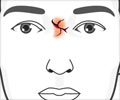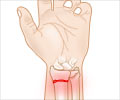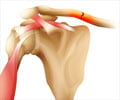Rigid cast is better than a splint if the fracture is displaced, says the American Academy of Orthopaedic Surgeons (AAOS).
Rigid cast is better than a splint if the fracture is displaced, says the American Academy of Orthopaedic Surgeons (AAOS).
Its recently released evidence-based clinical practice guidelines on the Treatment of Distal Radius Fractures also says thatIf a fracture was not displaced -- as in a hairline crack -- a removable splint can be worn.
If a fracture has a tendency to fall back the way it was before the physician fixed it, research suggests that these fractures heal better if the surgeon operates on them, rather than treating them with a cast.
A distal radial fracture usually occurs as a result of a fall. For example, a fall may cause someone to land on his or her outstretched hands, breaking the larger of the two bones in the forearm, near the wrist.
In 2007, more than 261,000 people visited the emergency room due to a distal radius fracture.
It is to cope with the situation, the surgeon’s body has released its guidelines, which would help improve patient care.
Advertisement
"While a wide range of treatment options are available, they should always be tailored to individual patients after discussions with their orthopaedic surgeons," Lichtman added.
Advertisement
Lichtman points out that some elderly patients are physiologically younger than others. By lifting weights, getting regular exercise, and staying in shape, some seniors have the same bone structure of an individual 20 or 30 years younger. Lichtman and his colleagues had been looking for answers to this particular question in the current review of the literature and were surprised, once again, to find that no answers existed at this time.
As the current studies lack evidence-based support, the following recommendations were a consensus among the Academy work group:
Distal radius fractures treated without surgery should have repeated x-rays for three weeks and when the use of a splint or cast is discontinued.
Patients should perform active finger motion exercises following diagnosis of distal radius fracture.
Patients with distal radius fractures and unremitting pain need to be re-evaluated promptly by their physician.
"Probably the most valuable part of this exercise was the realization that better studies are needed to precisely determine which current treatments work the best under different clinical circumstances. We also came up with some helpful ideas on how to design future studies," said Dr. Lichtman.
More than 4,000 journal articles from around the world were analyzed over the course of a year and every article was graded on a five-point scale depending on the strength and quality of the evidence. Only prospective, randomly controlled clinical trials with enough patients to establish clinical and statistical significance could earn the highest grade, ranking as strong evidence.
Source-Medindia
GPL














